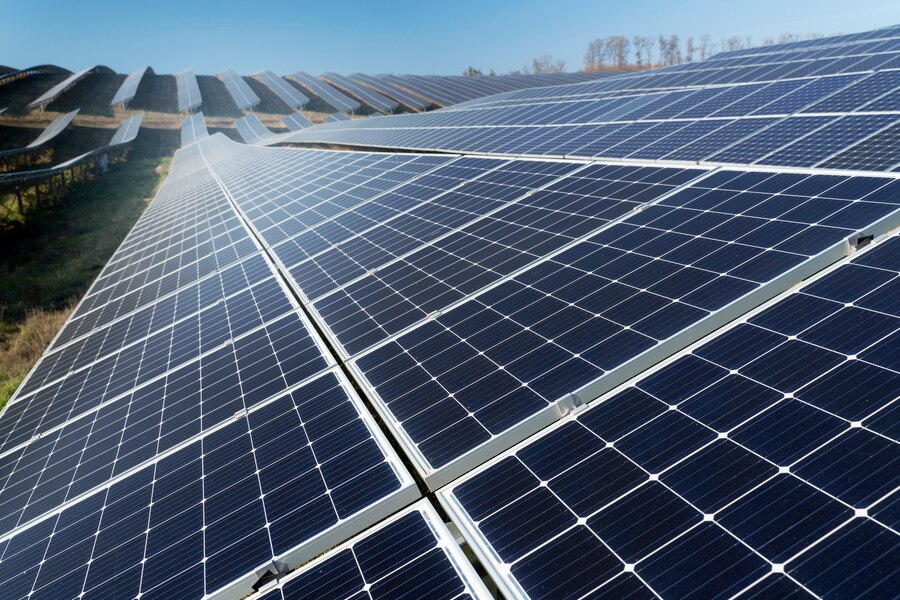As the generation mix shifts towards renewables, particularly solar, bringing diversity into the supply mix by enhancing the share of wind is imperative. This will help in partly addressing grid challenges, along with cost advantages and support for domestic manufacturing.
This article explores India’s expanding wind energy sector, focusing on Suzlon Energy’s position and growth potential. It examines the company’s financial performance, order book, and expansion plans against the backdrop of India’s ambitious renewable energy targets. The report also evaluates Suzlon’s competitive advantages, market trends, and challenges to provide a comprehensive outlook on the company’s role in India’s sustainable energy future.
Industry Overview
India’s wind energy sector is propelling the country towards a sustainable future. As the world’s third-largest electricity producer and consumer, India’s growing population and increasing per-capita energy consumption drive demand for clean power. Wind energy and solar and hybrid solutions are crucial to reducing dependence on imported fossil fuels.
With the potential for high plant load factors and integration with energy storage, wind-solar hybrid projects offer a reliable, round-the-clock renewable energy source.
India’s wind energy sector is showing strong growth, with the country ranking 4th globally in total wind installations. The industry commissioned 770 MW in the quarter, which fell below expectations.
Estimates suggest India could achieve 5 GW of wind installations in FY’25. Many turbines are in the pre-commissioning phase, expected to be operational in Q2 FY’25. The sector’s expansion presents significant opportunities for established players in the market.
Company Overview Of Suzlon Energy
Suzlon Energy, founded in 1995, stands as a leading global wind energy company headquartered in India. With over 16,000 employees across 25 countries, Suzlon has installed more than 20.8 GW of wind energy worldwide.
The company manufactures wind turbines ranging from 600 kW to 2.1 MW capacity and holds a 10% global market share. Suzlon dominates the Indian market with 111+ wind farms and an installed capacity exceeding 14,820 MW. The company pioneered the ‘Concept to Commissioning’ model in wind energy and has expanded into solar power, offering Wind-Solar hybrid solutions.
Suzlon’s installations reduce over 53.37 million tonnes of CO2 emissions annually, contributing significantly to sustainable energy development. Suzlon’s operations and maintenance business now oversees 14.8 GW of capacity in India, maintaining over 96% machine availability.
Suzlon Energy reported a robust orderbook of 3.8 GW as of June 2024, which management described as the largest ever in the company’s history. This strong order book is attributed to the superior technology of their S144 WTG model and increased customer confidence.
The company’s deliveries in Q1 FY25 reached 274 MW, doubling from 135 MW in Q1 FY24, indicating significant growth. The order book composition has shifted, with about two-thirds now coming from the commercial & industrial (C&I) sector and one-third from power purchase agreements (PPAs).

Management expects most of the current 3.8 GW order book to be executed between FY25 and FY26, with some extending into early FY27. The company is selective in taking orders, focusing on those with confirmed offtake and definitive timelines. Suzlon’s manufacturing capacity is between 3.5 and 4 GW annually, with plans for expansion in FY26, suggesting continued order book growth expectations.
Investor sentiment for the company shows notable trends from March to Jun 2024. Promoter holdings remained stable at around 13.27%. Foreign Institutional Investors (FIIs) demonstrated increasing interest, with their stake rising from 19.57% to 21.53%. Domestic institutional investors (DIIs) also increased their holdings from 6.30% to 9.17%.
Public shareholding saw decline from 60.85% to 56.03%. The growing FII stake suggests rising international confidence, while the slight reduction in public holdings might indicate a shift towards institutional ownership.
















